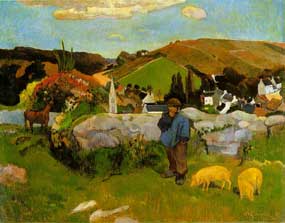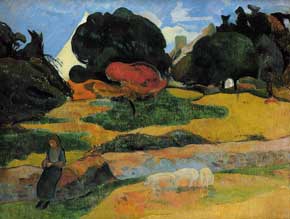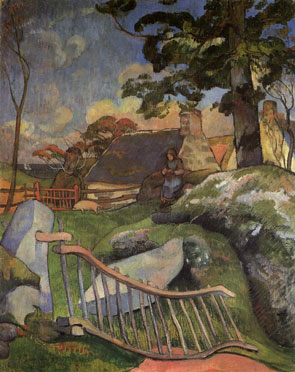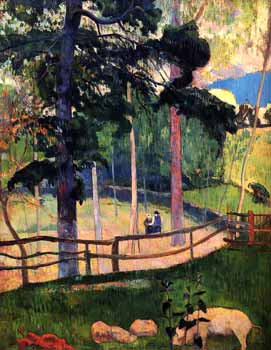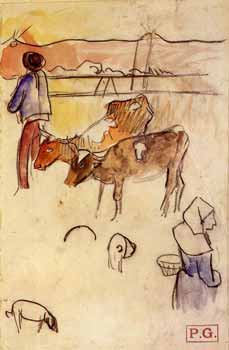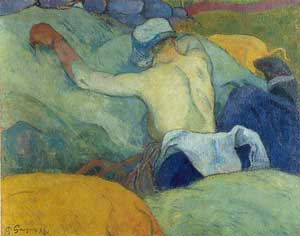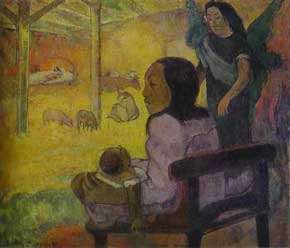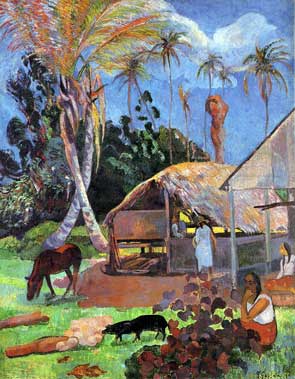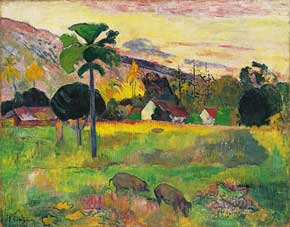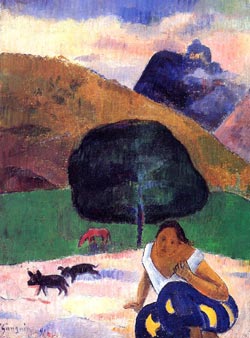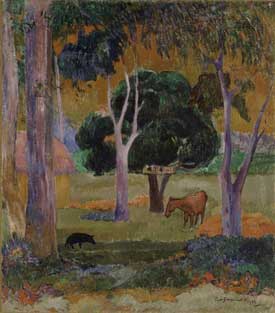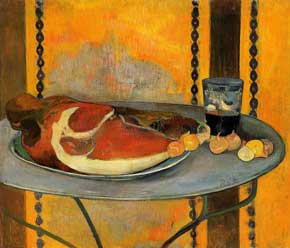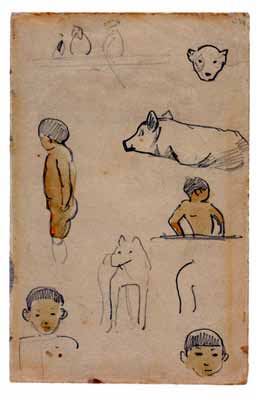France, (1848-1903)
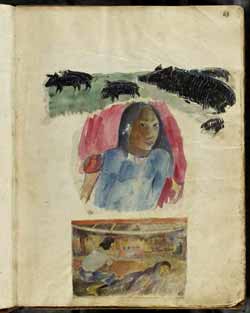
-
Cochon sauvage, tahitienne, réunion nocturne
- from the Noa-Noa notebook
- (c. 1893-94), black ink and watercolor
- 9.1 x 12.4 in. (23.2 x 31.5 cm.)
- Louvre
-
Editor’s Note:
Noa-Noa (Tahitian for “fragrance”) was Gauguin’s journal or notebook of the two years he spent in Tahiti (1893-4). On his return to France, Gauguin began work on a self-published project of the journal text with ten woodcut illustrations. He hoped this would make his Tahitian experience and new art more understandable to his contemporaries.
Although never realized in their intended form, both the text and the ten woodcuts for Noa-Noa survive among Gauguin’s known works. More contemporary printings of Noa-Noa that include the woodcuts and original sketches and colored images from the journal’s pages and borders have been published.
About the Artist
Paul Gauguin, French, (1848-1903). Eugene-Henri-Paul Gauguin was one of the leading French painters of the Postimpressionist period. In 1874, after viewing the first impressionist exhibition, he became a collector and amateur painter. He exhibited with the impressionists in later exhibitions and gradually gave up his secure existence to devote himself to painting.
Later, Gauguin turned away from impressionism and adapted a less naturalistic style, which he called synthetism, characterized by the use of large flat areas of nonnaturalistic color.
During several trips to Tahiti, he took every opportunity to study Tahitian old culture and tried to resurrect it in his paintings. His later art suggested a flight from civilization, a search for a more primitive and more real way of life. Gauguin lived the last years of his life painting in Tahiti.

